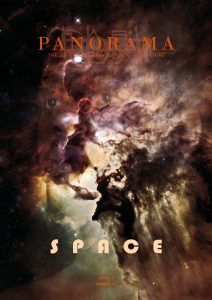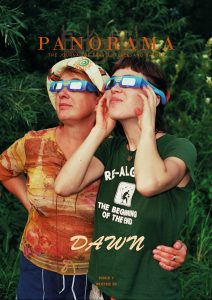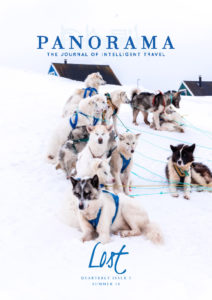July 2019
Eleven years after my first stay in East Africa
8,000 years after the formation of Menengai Crater
The Great Rift Valley was made up of tracts of grassland and cliffs, corn fields dusted with tan and red earth, and wandering herds of cattle and goats and the occasional giraffe. It was a horizon of bright equatorial sun, with high elevations that tempered the tropical heat. It was cities of choking traffic and small towns of sagging, one-storey shops painted in the colours of Kenyan mobile phone carriers and soft drink companies. It was piles of cassava and husked corn drying on tarps, and it was lonely wooden vegetable stands where pyramids of tomatoes balanced in plastic buckets next to bunches of green bananas. Driving through the Great Rift Valley meant passing large trucks, beat-up vans serving as the bus system, and Land Cruisers painted with the logos of safari companies: Simba Tours, Karibu Safaris, Shadows of Africa.
It is also the place where the continent of Africa is being torn apart by tectonic activity. The East Africa Rift Zone has created the deep trough of the Red Sea in the north and Lake Malawi in the south. In the middle, the rift zone has stretched out the wide plains to the point that cliffs and mountains now rise far above the edges of the Great Rift Valley. Mountains pop up seemingly out of nowhere. It is where magma has found its way to our Earth’s surface, giving birth to volcanoes.
In Tanzania, the dormant flat-topped stratovolcano of Kilimanjaro rises high above the savannah. Its ancient lava built up the mountain to a point that it hosts glaciers and snow still dusts its peak in the wet season. This is the roof of Africa, hosting some of the continent’s highest peaks including Mount Kilimanjaro and Mount Meru in Tanzania, Mount Elgon in Uganda, Mount Kenya in Kenya, and Mount Nyiragongo in the Democratic Republic of the Congo. These volcanoes are almost all active; Nyiragongo’s last major eruption, which began in 2002 and is ongoing, killed 250 people in 2002 and an additional 37 in 2021. Next door to these mountains are also volcanic calderas, such as Ngorongoro Crater in Tanzania and Menengai Crater in Kenya. As assuredly as volcanoes build themselves up, they also blow themselves apart.
I had come to the Great Rift Valley town of Nakuru, eleven years after my first stay in East Africa, hoping to visit Menengai Crater. The deep caldera testified to the violent nature of this landscape and promised views of the East African plains. I was itching to go.
From Nakuru, it was possible to walk the eight kilometres to Menengai, but I neither had enough time for the hike nor the opportunity to shower before a flight late that evening—plus there were warnings about muggings in the area—so instead, I looked for a ride. It was early morning when I walked down to a traffic circle near my hotel to find a motorcycle taxi, known in Kenya as a boda-boda. The motorcycles were ubiquitous, and dozens of men (always men) congregated on street corners, many with faded safety vests, ready to pick up passengers. Old ladies on their way to church, mothers with arms full of groceries and babies, businessmen with briefcases, and, this morning, a white woman in hiking gear wanting a last moment on a mountain: people of all backgrounds took boda-bodas to get around.
Waweru had been leaning up against his boda-boda, parked just away from a busy Total petrol station. He was sipping chai and dressed in four thin jackets in the cool morning. When I walked up and asked who might be able to take me up to Menengai, Waweru was the only driver that nodded and gestured me over.
“Ninataka kwende mlima,” I said, pointing upwards. I hoped to convey that I wanted to go up to the mountain. Could he take me to Menengai?
Waweru looked to be his early forties, with receding, close-cropped hair and a furrowed forehead that gave him a look of perpetual concern. Or his expression may have been due to my uncertainty about where on the caldera I wanted to go. I pulled up a map on my phone for us to consult. The rim of the caldera looked like it could be accessed from multiple sides. There was a road that looked like it went down into the caldera itself, plus a hotel named Menengai that seemed to have a separate viewpoint.
“Kuona. Mlima,” I said in the toddler Swahili I was trying to remember from my previous trips to East Africa. “To see. Mountain.”
Waweru nodded, and in a mix of English and Swahili said he knew the view at the top. He still seemed a little apprehensive.
After a little more start-and-stop attempts at conversation, I learned Waweru’s name and that he was a member of Kenya’s most populous tribe, the Kikuyu. It turned out his Swahili was only a little better than mine. Once our tangle of English, Swahili, and Kikuyu led to a final negotiation of the destination and price, I swung my leg over the back of the boda-boda and gripped the passenger bar along the seat. We headed up out of the city, bumping around potholes. Who knows where on the volcano we might end up.
*****
At the outskirts, the road became smoother. We passed elegant hotels and small compounds with front yards manicured in the manner of the past British colonisers. The white houses stood out from the dusty landscape like bones bleached in the sun, and the sight of the showy gardens in front left me unsettled.
My first trip to East Africa had been in 2008. I was studying in Tanzania, just as Kenya’s post-election violence of the year before was finally losing steam. As a young, white kid at university, my eyes opened to the legacies of colonialism at the same time the region’s natural wonders awed me. Tanzanians in Dar es Salaam and the Kilimanjaro region who befriended me taught me the most about histories rarely touched upon in US classrooms or mainstream media.
Now, back in the region over a decade later, I was still learning. Kenya’s recent colonial and national history was more violent and heart-wrenching than I had understood. The area around Nakuru, for example, was central to resistance and violence in the 1950s. These volcanic highlands were, as the British East Africa Commission of 1925 put it, “some of the richest agricultural soils in the world, mostly in districts where the elevation and climate make it possible for Europeans to reside permanently.” The British colonisers eventually called the area from Nakuru to Nairobi “the White Highlands,” and from 1901 to 1961, only whites were allowed to settle there. By the middle of the century, many Kikuyu and members of other tribes took an oath to fight to the British who had stolen their land, calling themselves the Kenya Land and Freedom Army (KLFA). The British reacted by putting Kenya under a state of emergency for seven years and killing or torturing 90,000 suspected KLFA fighters or sympathizers and interning 160,000 to 300,000 people under horrifying conditions. As a guerrilla fighting group, the KLFA killed around 1,800 people during the fight for freedom and land, a fight the British called the Mau Mau Uprising. While King Charles III publically expressed “sorrow” and “regret” for British atrocities during a visit to Kenya in 2023, the British Government has yet to formally acknowledge the murders and mistreatment of Kenyans under harsh colonial rule.
It was hard to shake a feeling of unease as I travelled through the legacies of this land.
*****
As Waweru and I rode, Nakuru’s wealthy neighbourhoods soon transformed into countryside, and our road turned to rutted, hard-packed dirt. The curling route rose up another 400 metres in elevation and green fields soothed me with their vibrant show of life, lest I forget about Kenya’s resilience and pride.
Apprehension returned as Waweru’s motorcycle started to sputter and then, “Bang!” It turned out Waweru’s old boda-boda couldn’t handle the incline of the road with both our weights on it. It groaned, and we stopped abruptly.
“Ninaweza kutembea kidogo?” I asked. Should I walk a little?
“Ndiyo.” Yes, Waweru agreed. I got off and Waweru sped ahead. For a moment I felt abandoned. Did he think I’d walk the rest of the way, not just the steep section? I hiked up a few minutes, noticing the layers of the roadcut to my left. It looked like strata of brown pitted volcanic rocks with darker, richer soil on top, a record of past Menengai eruptions.
The way up flattened, revealing Waweru waiting for me at a bend in the road. Back on the boda-boda I went, though I had to get off a second, third, and fourth time in the steeper sections. We passed a few farms and stores and Menengai Primary School. It was 7:30 in the morning on a Saturday, and few people were around, even though a community lived on the volcano’s slopes. There was nobody to ask for directions. Waweru had seemed confident at all the turns to get us up this far but hesitated as the road sloped downhill. We pulled up the map on my phone again. It seemed we were still following the rim of the caldera, so we kept going, past one turnoff to a small guesthouse, and then suddenly there we were, at the edge of the mountain, looking 500 metres down into the caldera.
“Unaweza simama?” I asked Waweru. Can we stop? I quickly jumped off the motorcycle to stand at the edge, staring across into the caldera’s expanse.
Its vast bottom was the most green I’d seen in a long time. August was dry season in the region, and my views in East Africa had usually been obscured by dust, smoke, and air pollution, but this morning’s air was clear after yesterday’s rain. The other edge of the caldera was 11 kilometres distant, and the bushes and trees at the bottom were so far away that they became a continuous blanket. The caldera floor undulated softly, with smooth hills rising and falling, sometimes with wide furrows as though a giant plough had come through to ready the land for planting.
Menengai is still an active volcano and, like hominids, has changed and evolved. Around 200,000 years ago, Menengai would have begun as a gently sloping shield volcano like those of Hawaiʻi. Many more eruptions would have built it up and more than seventy lava flows, some as recent as a few hundred years ago, have added to the land since the volcano’s last major eruption.
But at its core, the caldera is a mark of violence on the land. While the spot is named Menengai Crater, this is geologically a caldera, not a crater: craters form where lava shoots out of a volcano and dozens can dot a mountain, while expansive calderas are formed when the magma chamber underneath a volcano cataclysmically collapses. Menengai’s twenty-eight-square-kilometre caldera was formed by two massive eruptions, the more recent of which was 8,000 years ago. Menengai’s eruptions were incredibly violent events, where frothy lava instantly cooled into volcanic bombs and ash as it exploded out of the volcano, rolling across the land in superheated clouds. Hot pumice rained down, covering the land. Each eruption of Menengai ejected eight times the amount of lava onto the landscape than Mount St. Helens did in 1980. We don’t know the immediate effect these eruptions had on people in the area, but it couldn’t have been good. In the long term, the volcanic rocks bring nutrients to the soil and the height of the mountains brings rain to the plains.
As Waweru and I gazed down into the modern caldera, I noticed mobile phone towers and thin dirt roads among the greenery. In one area, concentrated steam rose into the air.
I pointed to the caldera’s floor and asked Waweru, “Moshi?”, the Swahili word for smoke. I had no idea how to say “steam.”
“Hapana.” He shook his head. “There is hydrothermal energy,” he explained in a surprising burst of English. The steam was from wells at a geothermal power plant, which uses the heat of the magma deep underneath the Earth to create steam to power turbines. Kenya has long utilised its location in the Great Rift Valley and the country is the largest producer of geothermal power in Africa. Newer, larger plants, including one inside Menengai’s caldera, aimed to become a more reliable source of energy for Kenya than fossil fuels imported from abroad or hydroelectricity from drought-threatened reservoirs.
I spotted smaller, natural steam vents, known as fumaroles, proof that the volcano was simply sleeping, not extinct. Local legends say that the volcanic steam comes from the souls of Maasai warriors, who fought a bloody battle on the volcano in the mid-1800s. “Menengai” comes from the Maa word for “death” or “corpse.” The winners of the battle, the Ilpurko Maasai, were said to have thrown the bodies of defeated Ilaikipiak warriors into the caldera from somewhere near where I was standing. Many say strange spirits dwell there, while others believe demons live in this “Place of Corpses.”
Waweru pointed down the road. “More view,” he said, now eager to show me the sights. With me walking and Waweru riding at a slow pace, we followed the road and the rim to an official viewpoint. Around a large dirt parking lot were a couple of shuttered shops, some signs about the caldera, and a wooden fence on the caldera rim warning visitors not to go past the edge.
The top of Menengai is a nature reserve, where rare birds, snakes, and antelope live above the ever-growing towns below. The mountain and reserve rise up from the grid of farms around it, protected and yet not separate from the landscape. I sat under an acacia tree near the edge of the caldera’s cliff, soothed by the sound of the wind and a few birds. Waweru gave me space and wandered into the surrounding forest. After the anxiety of wondering how or if we’d make it to the top, I welcomed the moment of serenity. Was this what sitting on the edge of a dangerous caldera was supposed to feel like?
A school bus bumped into the small parking lot and a throng of secondary school students, dressed in uniforms of blue trousers and jumpers, came barrelling out, yanking me out of my meditation. Some hurried to a shop and emerged wrapped in blankets and patterned kanga cloths. At 2,300 metres up, the wind was cool to my skin, and likely frigid to the Kenyans. Grinning, arms thrown casually around each other’s waists and necks, the students posed with old cameras and flip phones at the edge of the caldera. Waweru joined me back near the viewpoint to watch them laugh and take in the view.
The students soon gathered around their teacher, looking rapt, but I couldn’t understand any of the conversation. I wondered what this caldera was to them. A place to explore the geology of the land? A place to learn about battles of the country’s past and present? A place to talk about the future of natural resources? The teacher could have brought his students to Menengai for any number of lessons.
I couldn’t ignore these overlapping stories. Perhaps Waweru’s initial hesitation to take me up to Menengai was not about the route or the mechanical issues of his boda-boda, but because he knew the land was not to be taken lightly. This geologic rift tearing itself apart, this “Place of Corpses,” this caldera, was a place marked by violence. Could a simple visitor like me ever begin to understand this deep history?
Perhaps not.
But opening myself up to the feelings of disquiet as I stood on the land was a starting point. If we label dynamic landscapes as simple scenery, we are ignoring their complex, layered histories. We risk losing our connection to all that the land takes and all that it gives. After all, it was amid the volcanoes of the Great Rift Valley that our ancestors utilised the resources of this landscape to band together and first become human.
We all originate from a place of turmoil.









